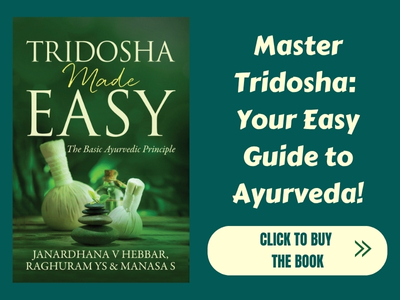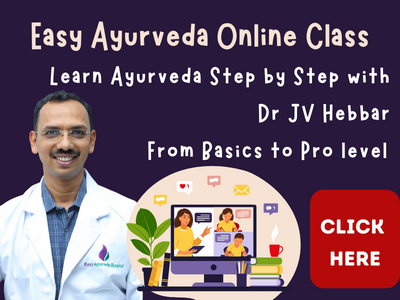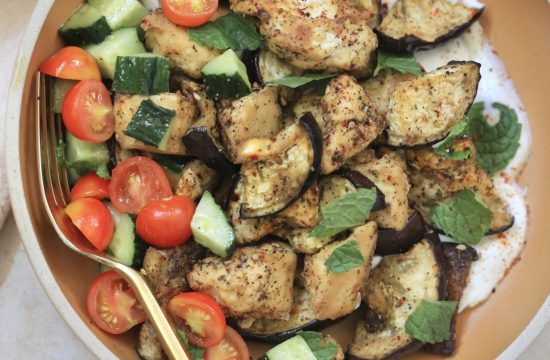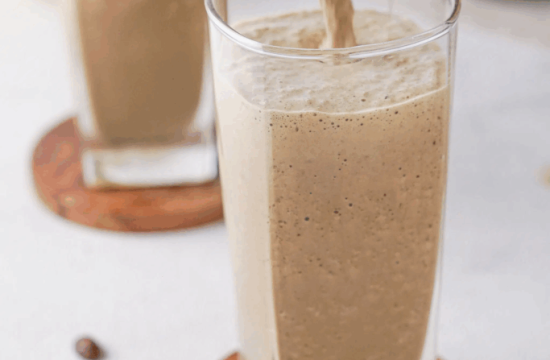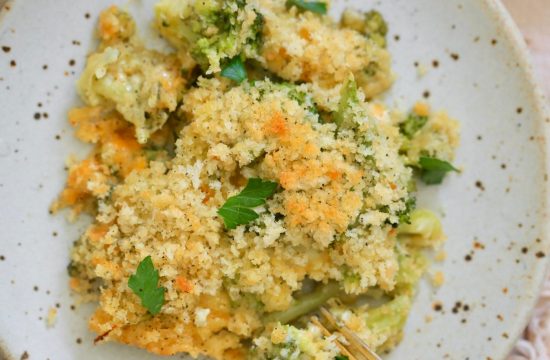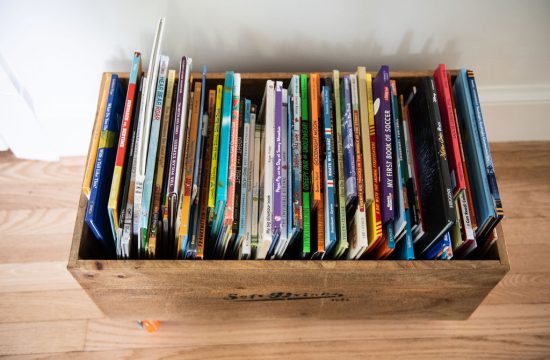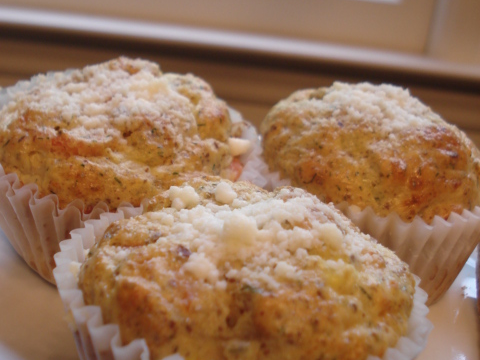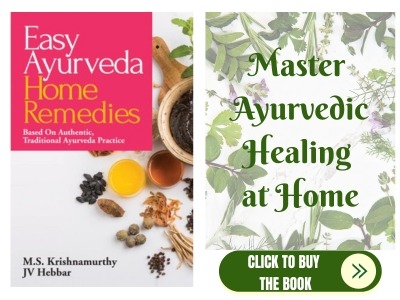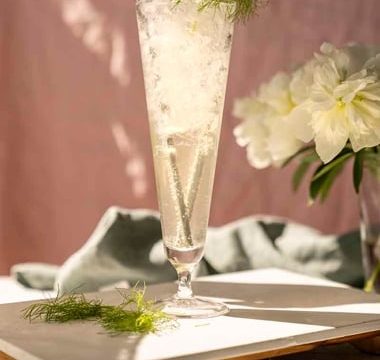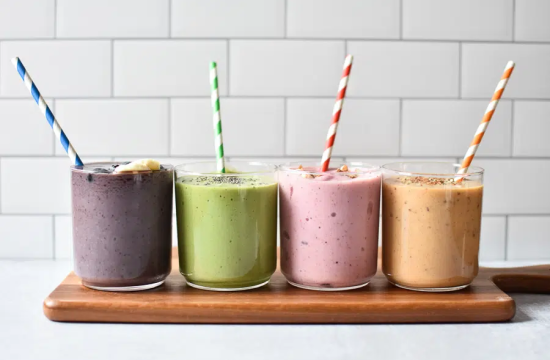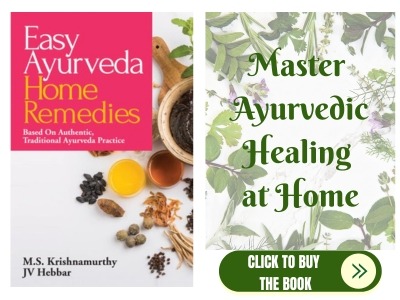The 9th chapter of Chikitsasthana of Sushruta Samhita is named as Kuştha Cikitsitam Adhyaya. This chapter deals with Treatment of Leprosy
अथातःकुष्ठचिकित्सितंव्याख्यास्यामः।।१।।
यथोवाचभगवान्धन्वन्तरिः।।२।।
Now we will expound Kuștha Cikisita – treatment of Leprosy (and some other skin diseases); as revealed by the venerable Dhañvañtari.
Nidāna – causes
विरुद्धाध्यशनासात्म्यवेगविघातैःस्नेहादीनांचायथारम्भैःपापक्रिययापुराकृतकर्म-योगाच्चत्वग्दोषाभवन्ति।।३।।
Tvakdoșās i.e. the diseases of the skin arise due to the below mentioned causative factors –
– viruddha, adhyashana asatmya bhojana – consumption of improper foods – like taking incompatible foods, excessive eating and consumption of unaccustomed foods etc.
– vega vighata – habitual suppression of natural urges of the body
– snehadinam cha ayatha arambhah – improper administration of therapies like oleation etc.
– papa kriyaya – committing sinful acts and
– pura krta karma yogat cha – effects of actions done in previous lives
Varjya āhara – vihāra – food and activities to be avoided
तत्रत्वग्दोषीमांसवसादुग्धदधितैलकुलत्थमाषनिष्यावेक्षुपिष्टविकाराम्लविरुद्धाध्यशनाजीर्णविदाह्यभिष्यन्दीनिदिवास्वप्नंव्यवायंचपरिहरेत्।।४।।
Patients of skin diseases should avoid the below said –
– use of mamsa – meat, vasa – fat (muscle fat), dugdha – milk, dadhi – curd, taila – oil, kulattha – horse gram, masa – black gram, nispava – flat bean, iksu – sugarcane, pistavikāra – eatables prepared from corn flour, amla – sours substances ,
– viruddhasana – incompatible foods,
– adhyasana – overeating,
– ajīrņaśana – uncooked foods or that which cause indigestion,
– vidāhī – foods which cause burning sensation during digestion,
– abhișyandi – foods which increase moisture inside the tissues;
– divaswapna – sleeping during day and
– vyavaya – copulation
Pathya āhāra vihāra – suitable foods and activities
ततःशालिषष्टिकयवगोधूमकोरदूषश्यामाकोहालकादीननवान्भुञ्जीतमुद्गाढक्यो-रन्यतरस्ययूषेणसूपेनवानिम्बपत्रारुष्करव्यामिश्रेण,मण्डूकपर्ण्यवल्गुजाटरूषकरूपिकापुष्पैःसर्पि :सिद्धैःसर्षपतैलसिद्धेर्वा,तिक्तवर्गेणवाऽभिहितेन; मांससात्म्यायवाजाङ्गलमांसममेदस्कंवितरेत्;तैलंवज्रकमभ्यङ्गार्थे;आरग्वधादिकषायमुत्सादनार्थे;पानपरिषेकावगाहादिषुचखदिरकषायम्इत्येषआहाराचारविभागः।।५।।
Below mentioned kinds of foods should be consumed by the patient suffering from Kustha –
– Foods prepared from old sali – old rice, șastika – paddy grown in sixty days, yava – barley, godhüma – wheat, koradüşa, śyāmaka,uddälaka etc. They should be consumed along with yüşa (soup) of mudga – green gram, ädhaki and similar pulses or süpa – meat soup added with nimbapatra or āruşkarapatra;
– Foods should be consumed along with ghee or sarsapa taila – mustard oil boiled with mandükaparni, avalgujä, ätarüşaka and rüpikapuspa (flower of arka plant) or with herbs belonging to tikta varga – bitter tasting group of herbs
– Meat of animals of jäñgala desha i.e. desert like region, devoid of fat shall be consumed by persons who are habituated to meat eating.
Also, below mentioned are specific indications –
– Vajraka Taila – the description of medicated oil which will be given further on, should be used for anointing and massaging the body
– Kashaya – decoction or even powder or paste of the herbs belonging to Aragvadhadi Gana group of herbs is used for massaging the body
– Khadira Kashaya – decoction of Khadira – Acacia catechu should be used for the purpose of drinking, pouring on the body and also for tub bath
All the above mentioned regimens of foods and activities shall be adopted by the patient suffering from Kustha.
Cikitsā – treatment
तत्रपूर्वरूपेषूभयतःसंशोधनमासेवेत।तत्रत्वक्संप्राप्तेशोधनालेपनानि,शोणितप्राप्तेसंशोधनालेपनकषायपानशोणितावसेचनानि,मांसप्राप्तेशोधनालेपनकषायपानशोणितावसेचनारिष्टमन्थप्राशाः,चतुर्थकर्मगुणप्राप्तंयाप्यमात्मवतःसंविधानवतश्च,तत्रसंशोधनाच्छोणितावसेचनाच्चोर्ध्वंभल्लातशिलाजतुधातुमाक्षीकगुग्गुल्वगुरुतुवरकखदिरासनायस्कृति-विधानमासेवेत;पञ्चमंनैवोपक्रमेत्।।६।।
Treatment during purvarupa stage – During the premonitory stage of kustha, purificatory therapies done in both directions i.e. upwards – emesis and downwards – purgation should be administered.
Treatment for tvak prapta kustha – When the disease i.e. kustha is localized in skin (rasa dhatu), the below mentioned treatments should be done –
– Shodhana i.e. purificatory therapies and
– Alepana – application of medicinal pastes on the body
Treatment of rakta prapta kustha – When the disease i.e. kustha has spread to and localized in rakta dhatu i.e. blood, the below mentioned treatments should be done –
– Samshodhana i.e. purificatory therapies,
– Lepana – external application of medicinal pastes,
– Kashaya Pana – drinking of medicated decoctions and
– Shonitavasechana / Raktamoksana – bloodletting should be administered.
Treatment of mamsa prapta kustha – When the disease i.e. kustha has spread to and localized in mamsa i.e. muscle tissue, below mentioned treatments should be done –
– Shodhana – purificatory therapies
– Lepana – external application of medicinal pastes
– Kashaya Pana – drinking herbal decoctions
– Shonita Avasecana – bloodletting
– Arishta, Mantha, Prasha
Treatment of chaturtha karma guna praptam kustha – When the disease i.e. kustha has invaded and localized in medas i.e. fat and other tissues it is considered that it has attained the fourth quality. In this condition and also when it has become yapya i.e. controllable but persistent and if the patient is self-controlled and faithful in following all restrictions and adhering to the prescribed treatments, the below mentioned treatments should be done –
– Samshodhana – purificatory therapies,
– Shonitavasecana – Bloodletting and following this,
– Consumption of recipes prepared from either Bhallataka, Silajatu, Dhatu Maksika, Guggulu, Aguru, Tuvaraka, Khadira, Asana or Ayaskriti
Treatment of pancama karma guna praptam kustha – When the disease i.e. kustha has become incurable, it is said to have attained the fifth quality. In such conditions, no treatment should be administered.
Rüpaavastha Cikitsa – Treatment of Kustha when symptoms have manifested
तत्रप्रथममेवकुष्ठिनंस्नेहपानविधानेनोपपादयेत्।मेषशृङ्गीश्वदंष्ट्राशाङ्गेष्टागुडूचीद्विपञ्चमूलीसिद्धंतैलंघृतंवावातकुष्ठिनांपानाभ्यङ्गयोर्विदध्यात्,धवाश्वकर्णककुभपलाशपिचुमर्दपर्यटकमधुकरोधसमङ्गासिद्धंसर्पिःपित्तकुष्ठिनां,प्रियालशालारग्वधनिम्बसप्तपर्णचित्रकमरिचवचाकुष्ठसिद्धंश्लेष्मकुष्ठिनांभल्लातकाभयाविडङ्गसिद्धंवा,सर्वेषांतुवरकतैलंभल्लातकतैलंवेति।।७।।।
When the disease – kustha has clearly manifested, the treatment of the patient should be commenced with oleation therapy itself.
Vataja Kustha i.e. the disease caused by predominant aggravation of vata should be treated with ghee or oil prepared with the below mentioned herbs, used for both drinking and anointing purposes –
– meșaśrñgī,
– śvadamștrā,
– śārañgestā,
– guļuci and the
– two pañcamüla
Pittaja Kustha i.e. kustha caused by predominant aggravation of pitta should be treated with ghee boiled with the below mentioned herbs used for both drinking and anointing purposes –
– dhava,
– asvakarma,
– kakubha,
– palasa,
– picumarda,
– parpataka,
– madhuka,
– rodhra and
– samanga
Kaphaja Kustha i.e. disease caused by predominant aggravation of kapha should be treated with oil prepared with the below mentioned herbs used for both drinking and anointing purposes –
– priyāla,
– sala,
– aragvadha,
– nimba,
– saptaparana,
– citraka,
– marica,
– vaca and
– kustha or
– with bhallataka, abhayā and vidañga
Use of either Tuvaraka Taila or Bhallataka Taila is useful for patients of all types of Kustha.
Mahātiktaka Ghrta
सप्तपर्णारग्वधातिविषेक्षुरपाठाकटुरोहिण्यमृतात्रिफलापटोलपिचुमर्दपर्पटकदुरालभात्राथमाणामुस्ताचन्दनपद्मकहरिद्रोपकुल्याविशालामूर्वाशतावरीसारिवेन्द्रयवाटरूषकषड्ग्रन्थामधुकभूनिम्बगृष्टिकाइतिसमभागाःकल्कःस्यात्,कल्काच्चतुर्गुणंसर्पिःप्रक्षिप्यतद्विगुणोधात्रीफलरसस्तच्चतुर्गुणाआपस्तदैकध्यंसमालोड्यविपचेत्,एतन्महातिक्तकंनामसर्पिःकुष्ठविषमज्वररक्तपित्तहृद्रोगोन्मादापस्मारगुल्मपिडकासृग्दरगलगण्डगण्डमालाश्लीपदपाण्डुरोगविसर्पार्श :षाढ्यकण्डूपामादीञ्छमयेदिति।।८।।
Equal parts of each of the below mentioned herbs are taken and made into paste –
– Saptaparna,
– Aragvadha,
– Ativisa,
– Iksura,
– Patha,
– Katurohini,
– Amrtā,
– Triphala,
– Patola,
– Picumarda,
– Parpataka,
– Durālabhā,
– Trāyamāṇā,
– Mustā,
– Cañdana,
– Padmaka,
– Haridrā,
– Upakulyā (Pippali),
– Viśālā,
– Mūrvā,
– Satāvarī,
– Sārivā,
– Iñdrayava,
– Ațarūşaka,
– Sadgrañthā,
– Madhuka,
– Bhūnimba and
– Gristika
Now ghee is added to this paste in four times the quantity of the paste.
Dhatri Phala – Amalaka is added two times the quantity of the paste.
Water is added four times the quantity of the paste.
All are cooked well so as to prepare the medicated ghee. The resultant ghee is known by the name ‘Mahatiktaka Ghrta’.
Benefits – Mahatiktaka Ghrta mitigates the below mentioned conditions –
– leprosy,
– irregular fevers,
– bleeding diseases,
– heart diseases,
– insanity,
– epilepsy,
– abdominal tumour,
– eruptions,
– menorrhagia,
– cervical lymphadenitis,
– scrofula,
– filariasis,
– anaemia,
– erysipelas,
– piles,
– impotence,
– itching and
– scabies,
Tiktaka Ghrta
त्रिफलापटोलपिचुमन्दाटरूषककटुरोहिणीदुरालभात्रायमाणा:पर्पटकश्चैतेषांद्विपलिकान्भागाञ्जलद्रोणेप्रक्षिप्यपादावशेषकषायमादायनल्कपेष्याणीमानिभेषजान्यर्धपलिकानित्रायमाणामुस्तेन्द्रयवचन्दनकिराततिक्तानिपिप्पल्यश्चैतानिघृतप्रस्थेसमावाप्यविपचेत्,एतत्तिक्तकंनामसर्पिःकुष्ठविषमज्वरगुल्मार्शोग्रहणीदोषशोफपाण्डुरोगविसर्पषाढ्यशमनमूर्ध्वजत्रुगतरोगनंचेति।।९।।
Each of the below mentioned ingredients are taken in two pala – 80 grams quantity –
– Triphala,
– Patola,
– Picumarda,
– Atarusaka,
– Katurohini,
– Durālabhā,
– Trayamana and
– Parpata
These ingredients are boiled in one drona – 10.24 kg of water and reduced to one fourth quantity so as to prepare the decoction.
Each of the below mentioned herbs are taken in half pala – 20 grams quantity and made into paste –
– Trāyamņā,
– Musta,
– Indrayaya,
– Candana,
– Kirātarikta and
– Pippali
This paste is added to the above prepared decoction. To this, one prastha – 640 grams of ghee is added and processed so as to prepare the medicated ghee. This ghee is known by the name Tiktaka Ghrtam.
Benefits – Tiktakam Ghrtam mitigates the below mentioned conditions –
– leprosy / skin disorders,
– irregular fevers,
– abdominal tumour,
– piles,
– duodenal disease,
– dropsy,
– anaemia,
– erysipelas,
– impotence and
– cures the diseases of organs above the shoulders
अतोऽन्यतमेनघृतेनस्निग्धस्विन्नस्यैकांद्वेतिस्रश्चतस्रःपञ्चवासिराविध्येत्;मण्डलानिचोत्सन्नान्यवलिखेदभीक्षणं,प्रच्छयेद्वा,समुद्रफेनशाकगोजीकाकोदुम्बरिकापत्रैर्वाऽवघृष्यालेपयेल्लाक्षासर्जरसरसाञ्जनप्रपुन्नाडावल्गुजतेजोवत्यश्वमारकार्ककुटजारेवतमूलकल्कैमूत्रपिष्टैःपित्तपिष्टैर्वा,स्वर्जिकातुत्थकासीसविडङ्गगारधूमचित्रककटुकसुधाहरिद्रासैन्धवकल्कैर्वा,एतान्येवावाप्यक्षारकल्पेननिःनुतेपालाशेक्षारेततोविपाच्यफाणीतमिवसंजातमवतार्यलेपयेत्,ज्योतिष्कफललाक्षामरिचपिप्पलीसुमनःपत्रैर्वा,हरितालमनःशिलार्कक्षीरतिलशिग्रुमरिचकल्कैर्वा,स्वर्जिकाकुष्ठतुत्थकुटजचित्रकविडङ्गमरिचरोधमनःशिलाकल्कैर्वा,हरीतकीकरञ्जिकाविडङ्गसिद्धार्थकलवणरोचनावल्गुजहरिद्राकल्कैर्वा।।१०।।
सर्वेकुष्ठापहा :सिद्धालेपाःसप्तप्रकीर्तिताः।।
Next, oleation and fomentation should be given to the patient. Following this, blood should be let out by puncturing one, two, three, four or five veins.
If the patches of Kustha are elevated, they should be scraped or incised well. Alternatively they need to be rubbed with powders of samudraphena, leaves of śāka, gojihvā or kākodumbarikā.
Then the paste of the below mentioned ingredients macerated well with urine of cow or ox bile and applied –
– käkodumbarikā,
– lākṣā,
– sarjaråsa,
– rasāñjana,
– roots of prapunnāda,
– avalguja,
– tejovati,
– asvamāraka,
– arka,
– kutaja and
– arevata or
– gopitta (ox bile)
Alternatively, the paste of the below mentioned should be applied –
– svarjikakşāra,
– tutha,
– kāsīsa,
– vidañga,
– agäradhüma,
– citraka,
– kațuka,
– sudhā,
– haridrā and
– saindhava
The above-mentioned herbs should be burnt to ashes and alkali is prepared from them in the usual method. This alkali is mixed with Palasa Ksara and cooked until it attains the form of phanita – molasses. Once it attains this form, it is removed from the oven. This medicine is then applied on the patches of kustha.
Other recipe – The paste of the below mentioned herbs shall be applied on the patches of kustha –
– jyotiska phala (fruit of kasamarda),
– läksa,
– marica,
– pippali and
– leaves of sumani (jati)
Paste of the below mentioned ingredients is also useful for application –
– haritala,
– manassila,
– arka ksira,
– tila,
– sigru and
– marica
Paste of the below mentioned ingredients also forms an effective external application –
– svarjika,
– kustha,
– tuttha,
– kutaja,
– citraka,
– vidanga,
– marica,
– rodhra and
– manassila
The paste of the below mentioned ingredients may also be applied in kustha –
– haritaki,
– karanjika,
– vidanga,
– siddharthaka,
– lavana (saindhava),
– gorocana,
– avalguja and
– haridra
Thus, the seven pastes for external application which can cure kustha effectively have been described.
Treatment of varieties of kuştha
वैशेषिकानतस्तूज़दश्चित्रेषुमेशृणु।।११।।
Further, the treatment of Dadru – type of Kustha and Svitra – leucoderma shall be explained, please listen to the same.
Dadru Cikitsa – treatment of Ringworm
लाक्षाकुष्ठंसर्षपाःश्रीनिकेतंरात्रियॊषंचक्रमर्दस्यबीजम्।।
कृत्वैकस्थंतक्रपिष्टःप्रलेपोदद्रूष्क्तोमूलकाद्वीजयुक्तः।।१२।।
Below mentioned ingredients are macerated with buttermilk and the resultant paste is applied on Dadru Kustha to cure it –
– Laksa,
– Kustha,
– Sarsapa,
– Sriniketa (sarala niryasa),
– Ratri (haridrā),
– Vyosa,
– Seeds of Cakramarda and
– Seeds of Mulaka
सिन्धूद्भूतंचक्रमर्दस्यबीजमिशूद्भूतंकेशरंतार्यशैलम्।।
पिष्टोलेपोऽयंकपित्थाद्रसेनदद्रूस्तूर्णंनाशयत्येषयोगः।।१३।।
Below mentioned ingredients are macerated with juice of Kapittaha and the resultant paste is applied on Dadru –
– Sindhudbhava (saindhava),
– Seeds of Cakramarda,
– Iksudbhuta (guda),
– Kesara (nägakesara) and
– Tärkşyasaila
This formulation is said to cure Dadru quickly.
हेमक्षीरीव्याधिघातःशिरीषोनिम्बःसोंवत्सकःसाजकर्णः।।
शीघ्रंतीव्रानाशयन्तीहदद्भूःस्नानालेपोद्धर्षणेषूपयुक्ताः।।१४।।
The below mentioned herbs are used for the purpose of bathing, external application and rubbing on the lesion of Dadru –
– Hemaksiri,
– Vyadhighati,
– Sirisa,
– Nimba,
– Sarja,
– Vatsaka and
– Ajakarna
This recipe quickly cures even the most severe forms of dadru.
Śvitra Cikitsa – treatment of leucoderma
भद्रासंज्ञोदुम्बरीमूलतुल्यंदत्त्वामूलंक्षोदयित्वामलप्वाः।।
सिद्धंतोयंपीतमुष्णेसुखोष्णंस्फोटाञ्छ्वित्रेपुण्डरीकेचकुर्यात्।।१५।।
Below mentioned ingredients are taken in equal quantity, boiled and theri decoction is prepared –
– Root of udumbari also known as bhadrā (kasthaudumbarikā) and
– Root of Malapú
This recipe should be consumed when it is comfortably warm by patients suffering from Svitra and Pundarika – a variety of Kustha.
द्वैपंदग्धंचर्ममातङ्गजंवाभिन्नेस्फोटेतैलयुक्तंप्रलेपः।।
पूति :कीटोराजवृक्षोद्भवेनक्षारेणाक्तःश्वित्रमेकोनिहन्ति।।१६।।
Skin of dvipi i.e. leopard or matanga i.e. elephant should be burnt and their ash is prepared. This ash is mixed with oil and should be applied on the eruptions which have burst open.
Putikita is an insect which emits a bad smell. It is mixed together with the ash of Rajavrksa and made into paste. This paste when applied is said to be the best medicine to cure Svitra – leucoderma.
कृष्णस्यसर्पस्यमसीसुदग्धाबैभीतकंतैलमथद्वितीयम्।।
एतत्समस्तंमृदितंप्रलेपाच्छ्वित्राणिसर्वाण्यपहन्तिशीघ्रम्।।१७।।
The below mentioned ingredients are mixed well and applied on the skin of the patient suffering from Svitra – leucoderma –
– well burnt ash of Krsna sarpa – black serpent and
– oil obtained from Vibhitaki
This oil quickly cures all varieties of Svitra.
अध्यर्धतोयेसुमतिनुतस्यक्षारस्यकल्पेनतुसप्तकृत्वः।।
तैलंशृतंतेनचतुर्गुणेनश्वित्रापहंम्रक्षणमेतदग्रयम्।।१८।।
The ash mentioned above is made into ksara – alkali by boiling it in water for seven times and later filtered in the method explained for preparation of alkali.
The alkali thus prepared is boiled in oil taken in four times its quantity. This oil is applied on the patches of Svitra – leucoderma. It is the best recipe to cure svitra.
घृतेनयुक्तंप्रपुनाडबीजंकुष्ठंचयष्टीमधुकंचपिष्ट्वा।।
श्वेतायदद्याद्गृहकुक्कुटायचतुर्थभक्तायबुभुक्षिताय।।१९।।
तस्योपसंगृह्यचतत्पुरीषमुत्पाचितंसर्वतएवलिम्पेत्।।
अभ्यन्तरंमासमिमंप्रयोगंप्रयोजयेच्छ्वित्रमथोनिहन्ति।।२०।।
A white colored domestic cock is made to starve until it is very hungry. Seeds of the below mentioned ingredients are macerated together with ghee and fed to the hungry cock as food –
– Prapunnāda,
– Kustha and
– Yastimadhu
The excreta of this cock is then collected. This is made into paste with ghee and applied all over the body which has been made ripe. This recipe cures svitra within a month of its use.
Jalagaņdaja kşāra
क्षारेसुदग्धेजलगण्डजेतुगजस्यमूत्रेणबहुस्नुतेच।।
द्रोणप्रमाणेदशभागयुक्तंदत्त्वापचेद्वीजमवल्गुजस्य।।२१।।
एतद्यदाचिक्कणतामुपैतितदासमस्तंगुटिकाविदध्यात्।।
श्चित्रंप्रलिम्पेदथसंप्रघृष्यतयाव्रजेदाशुसवर्णभावम्।।२२।।
Jalaganda (jalagandiraka) is burnt well and its ksara (ash) is obtained. This ksara is thoroughly mixed in elephant’s urine and boiled in one drona (10.24 kg) of water after adding to it one tenth part of powder of Avalguja. The mass is made into pills once it attains stickiness. The patches of Svitra are rubbed thoroughly and paste of these pills is applied on it. The skin quickly obtains normal colour by doing so.
कषायकल्पेनसुभावितांतुजलंत्वचाचूतहरीतकीनाम्।।
तांतामदीपेप्रणिधायधीमान्वर्तिबटक्षीरसुभावितांतु।।२३।।
आदीप्यतज्जातमीगृहीत्वातांचापिपथ्याम्भसिभावयित्वा।।
संप्रच्छितंतद्वहुश :किलासंतैलेनसिक्तंकटुनाप्रयाति।।२४।।
In the prescribed procedure, the bark of Cuta (amra) and Haritaki are made into decoction. The decoction is kept in a copper vessel. A cotton wick is kept soaked in this decoction, and is removed later and dried.
Later, this wick is soaked in milky sap of Vata and dried.
Following this, the wick is soaked in oil and lighted. The black soot formed from the flame of this wick is collected.
This lampblack is now mixed with katu taila (sarsapa taila – mustard oil). This portion of the skin having svitra is incised (scraped) and this oil is applied over it. After many such applications, this oil cures Svitra – leucoderma.
Avalgujadi Lepa
आवल्गुजंबीजमग्र्यंनदीजंकाकाह्वानोदुम्बरीयाचलाक्षा।।
लौहंचूर्णमागधीतायशैलंतुल्या :कार्याःकृष्णवर्णास्तिलाश्च।।२५।।
वर्तिकृत्वातांगवांपित्तपिष्टांलेपःकार्यःश्वित्रिणांश्वित्रहारी।।
लेपात्पित्तंशैखिनंश्वित्रहारिह्रीबेरंवादग्धमेतेनयुक्तम्।।२६।।
The below mentioned ingredients are taken in equal quantity –
– Good seeds of Avalguja,
– Nadija (Māksika dhātu),
– Kakodumburika,
– Laksa,
– Powder of loha (iron),
– Māgadhi,
– Tarksyasaila (rasanjana)
The mixture is mixed with equal quantities of Krsna Taila. All these are macerated and made into a wick. This wick is now rubbed with ox bile. When applied on the body, it cures Svitra.
Similarly, Svitra is cured by application of peacock bile or ash of Hribera.
Tutthadi Lepa
तुत्थालकटुकाव्योषसिंहाहयमारकाः।।
कुष्ठावल्गुजभल्लातक्षीरिणीसर्षपाःस्तुही।।२७।।
तिल्वकारिष्टपीलूनांपत्राण्यारग्वधस्यच।।
बीजंविडङ्गाश्वहन्त्रोर्हरिद्रेबृहतीद्वयम्।।२८।।
आभ्यांश्वित्राणियोगाभ्यांलेपानश्यन्त्यशेषतः।।
Paste 1 – Paste of the below mentioned ingredients is prepared –
– Tuttha,
– Alä,
– Katuka,
– Vyoșa,
– Simha (Rakta Sobhanjana),
– Arka,
– Hayamāraka,
– Kustha,
– Avalguja,
– Bhallata,
– Ksirini (Arkapuspi),
– Sarsapa and
– Snuhi
Paste 2 – Paste of the below mentioned ingredients is prepared –
– Leaves of Tilvaka,
– Arista,
– Pilu,
– Aragvadha,
– Vidanga bija,
– Asvahantri (Asvamāra),
– Haridra and
– Two types of Brhati
The above said two pastes when applied on the skin would cure svitra – leucoderma without leaving any remnants of the disease.
Nila taila
वायसीफल्गुतिक्तानांशतंदत्त्वापृथक्पृथक्।।२९।।
द्वेलोहरजसःप्रस्थेत्रिफलात्र्याढकंतथा।।
त्रिद्रोणेऽपांपचेद्यावद्भागौद्वावसनादपि।।३०।।
शिष्टौचविपचेद्भूयएतैःश्लक्ष्णप्रपेषितैः।।
कल्कैरिन्द्रयवव्योषत्वग्दारुचतुरङ्गुलैः।।३१।।
पारावतपदीदन्तीबाकुचीकेशराह्वयैः।।
कण्टकार्याचतत्पक्वंघृतंकुष्ठिषुयोजयेत्।।३२।।
दोषधात्वाश्रितंपानादभ्यङ्गात्त्वग्गतंतथा।।
अप्यसाध्यंनृणांकुष्ठंनाम्नानीलंनियच्छति।।३३।।
Ingredients –
One hundred pala (4000 grams) each of –
– Vāyasī,
– Phalgu, and
– Tiktā (kațuka)
Two Prastha of – powder of Loha (iron),
Three adhaka (2.56 kg) – Triphala (Haritaki, Bibhitaki and Amalaki)
Method of preparation – All the above said ingredients are boiled in three drona (30.72 kg) of water until only two parts (half the quantity) remains.
To this, fine paste of the below mentioned ingredients is added in four times quantity –
– indrayava,
– vyoșa,
– tvak,
– dāru,
– caturangula,
– pārāvatapadī,
– danti,
– bākucī,
– nāgakesara and
– kantakārī and
All these are cooked and medicated ghee prepared. This is known by the name Nila Ghrta.
Benefits – This Ghrta is used for drinking and also for application on the body (affected parts). When done, it cures kustha – leprosy which is difficult to cure.
Mehanila Ghrta
त्रिफलात्वक् त्रिकटुकं सुरसा मदयन्तिका |
वायस्यारग्वधश्चैषां तुलां कुर्यात् पृथक् पृथक् ||३४||
काकमाच्यर्कवरुणदन्तीकुटजचित्रकात् |
दार्वीनिदिग्धिकाभ्यां तु पृथग्दशपलं तथा ||३५||
त्रिद्रोणेऽपां पचेद्यावत् षट्प्रस्थं परिशेषितम् |
शकृद्रसदधिक्षीरमूत्राणां पृथगाढकम् ||३६||
तद्वद्धृतस्य तत्साध्यं भूनिम्बव्योषचित्रकैः |
करञ्जफलनीलिकाश्यामावल्गुजपीलुभिः ||३७||
नीलिनीनिम्बकुसुमैः सिद्धं कुष्ठापहं घृतम् |
म्रक्षणादङ्गसावर्ण्यं श्वित्रिणां जनयेन्नृणाम् |
भगन्दरं कृमीनर्शो महानीलं नियच्छति ||३८||
Ingredients –
One tula (4 kg) each of the below mentioned herbs are taken –
– Bark of Triphalā,
– Trikatu,
– Surasi,
– Madayantika,
– Vāyasi, and
– Dragvadha
Ten Pala (400 grmas) each of the below mentioned herbs are also taken –
– Kākamāci,
– Arka,
– Varuņa,
– Danti,
– Kutaja,
– Citraka,
– Därvi and
– Nidigdhika
All the above said ingredients taken in mentioned proportions are boiled in three drona (30.72 kg) of water until only six prastha (3480 grams) remain.
To this, one adhaka (20.56 kg) each of the below mentioned are added –
– juice of fresh cow dung
– curds
– milk
– cow urine and
– cow ghee
The paste of the below mentioned is also added –
– Bhunimba,
– Vyosa,
– Citraka,
– Karañja phala,
– Nilika,
– Syāmă,
– Avalgujā,
– Pilu,
– Flowers of Nīlini and
– Nimbi
All the above said ingredients are boiled and medicated ghee is prepared. This ghrta is known by the name Mahānila Ghrta.
Uses – This Ghrta bestows normal color to the skin in patients of Svitra when it is applied on the body. It also cures the below mentioned conditions –
– fistula in ano
– worms
– piles
मूत्रंगव्यंचित्रकव्योषयुक्तंसर्पिःकुम्भेक्षौद्रयुक्तंस्थितंहि।।
पक्षादूर्ध्ववित्रिभिःपेयमेतत्कुर्याच्चास्मिन्कुष्ठदिष्टंविधानम्।।३९।।
A pot is taken, the inside of which is smeared with ghee. Into this pot, gomutra, citraka and vyosha are put and later honey is added to it. The pot with the mentioned ingredients is kept undisturbed for a fortnight.
After the mentioned period, the pot is taken out and the medicine in it is consumed in suitable doses by patients suffering from Svitra.
At the same time, the other treatments prescribed for kustha are also done.
पूतीकार्कङ्गरेन्द्रद्रुमाणांमूत्रैःपिष्टाःपल्लवाःसौमनाश्च॥
लेपःचित्रंहन्तिदव्रणांश्चदुष्टान्यास्येषनाडीव्रणांश्च।।४।।
Below mentioned (ingredients) are macerated with cow’s urine and used for external application –
– Tender leaves of Pūtīka,
– Arka,
– Snuk,
– Narendradruma (āragvadha) and
– Sumanā (jāti)
Benefits – This application cures the below mentioned conditions –
– Svitra – leucoderma
– Dadru – ringworm / tinea
– Dusta Vrana – bad and contaminated ulcers,
– Arshas – piles and
– Nadi Vrana – sinus ulcers
अस्मादूर्ध्वनिःस्न्नुतेदुष्टरक्तेजातप्राणंसर्पिषास्नेहयित्वा।
तीक्ष्णैर्योगैश्छदयित्वाप्रगाढंपश्चाहोघंनिहरेच्चाप्रमत्तः॥४१॥
Afterwards, the below mentioned measures should be done –
– the vitiated blood should be taken out and
– oleation therapy should be given i.e. the patient is made to ingest ghee and his strength is restored following which,
– strong emetics are administered without any lethargy so as to produce more vomiting which helps in removing the doshas
दुर्वान्तोवादुर्विरिक्तोऽपिवास्यात्कुष्ठीदोषैरुद्धतैाप्तदेहः।।
निःसन्दिग्धंयात्यसाध्यत्वमाशुतस्मात्कृत्स्नान्निहरेत्तस्यदोषान्।।४२॥
पक्षात्पक्षाच्छर्दनान्यभ्युपेयान्मासान्मासात्स्रसनंचापिदेयम्।।
स्राव्यंरक्तंवत्सरेहिद्विरल्पंनस्यंदद्याच्चत्रिरात्रात्रिरात्रात्॥४३॥
If vomiting or purgation occurs inadequately in the patients, the doshas would get aggravated. These aggravated doshas accumulate in the body. With this, the disease becomes incurable. Hence, all efforts should be put to remove the morbid doshas from the body.
Spacing of therapies should be done as below mentioned –
– Chardana / Vamana (emesis therapy) should be administered once in every fortnight,
– Sramsana (purgation) should be administered once every month,
– Raktasravana / Raktamoksana (bloodletting) should be done mildly, twice in a year and
– Nasya (nasal medication) should be done once in every three days
Añya kuștha hara yoga – other recipes for leprosy
पथ्याव्योषंसेक्षुजातंसतैलंलीट्वाशीघ्रंमुच्यतेकुष्ठरोगात्।।
धात्रीपथ्याक्षोपकुल्याविडङ्गान्क्षौद्राज्याभ्यामेकतोवाऽवलिह्यात्।।४४।।
Below mentioned ingredients mixed and licked would cure kustha –
– Pathyā,
– Vyoșa,
– Guda and
– Taila (sesame oil)
Similarly, the below mentioned herbs should be powdered, mixed with honey and ghee and licked –
– Dhatri,
– Pathyā,
– Aksa,
– Upakulya,
– Vidanga (made into powder)
पीत्वामासंवापलांशांहरिद्रांमूत्रेणान्तंपापरोगस्यगच्छेत्।।
एवंपेयश्चित्रकःश्लक्ष्णपिष्टःपिप्पल्योवापूर्ववन्मूत्रयुक्ताः।।४५।।
तद्वत्तायंमासमात्रंचपेयं,तेनाजस्रंदेहमालेपयेच्च।।
One pala (40 gm) of haridrā added with the cow’s urine should be consumed for one month to get rid of the sinful disease. In the same way, citraka or pippali is made into fine paste and consumed with cow’s urine. Likewise, tārkşya should be consumed for a month and the body smeared with it.
आरिष्टीत्वक्साप्तपर्णीचतुल्यालाक्षामुस्तंपञ्चमूल्यौहरिद्रे।।४६।।
मञ्जिष्ठाक्षौवासकोदेवदारुपथ्यावह्नीव्योषधात्रीविडङ्गाः।।
सामान्यांशंयोजयित्वाविडङ्गैश्चूर्णंकृत्वातत्पलोन्मानमश्नन्।।४७।।
Bark of Arista (nimba) and Saptaparni are taken equal in quantity.
Below mentioned herbs are also taken equal in quantity –
– Laksā,
– Musta,
– Two pañcamūlas (Brihat and Laghu Pancamula constituting Dasamula),
– Two Haridrā (Haridra and Daruharidra),
– Mañjisthā,
– Akșa,
– Vāsaka,
– Devadāru,
– Pathyā,
– Vahni,
– Vyoșa,
– Dhātrī,
– Vidañga
All the above-mentioned herbs are pounded and their nice powder is prepared. This powder is consumed in one pala (40 grams) dosage daily. This would cure Kustha.
कुष्ठाज्जन्तुर्मुच्यतेत्रैफलंवासर्पिोणंव्योषयुक्तंचयुञ्जन्।।
गोमूत्राम्बुद्रोणसिद्धेऽक्षपीडेसिद्धंसर्पिर्नाशयेच्चापिकुष्ठम्।।४।।
One drona (10.24 kg) of Triphala Ghrta should be consumed in suitable doses by adding powder of Vyosa (Trikatu – Pippali, Marica and Shunti).
Gomutra – cow’s urine and water together should be taken in one drona (10.24 kg) quantity and in this, Aksapida (yavatikta) should be boiled and medicated ghee is prepared. This ghee cures kustha when regularly consumed.
आरग्वधेसप्तपर्णेपटोलेसवृक्षकेनक्तमालेसनिम्बे
जीर्णंपक्वंतद्धरिद्राद्वयेनहन्यात्कुष्ठंमुष्ककेचापिसर्पिः।।४९।।
Old medicated ghee should be processed and prepared with the below mentioned herbs and consumed –
– āragvadha,
– saptaparņa,
– patola,
– vrksaka,
– naktamālā,
– nimba,
– the two haridrā or
– muşkaka
This recipe cures kustha.
रोधारिष्टंपद्मकंरक्तसारःसप्ताह्वाक्षौवृक्षकोबीजकश्च।।
योज्याःस्नानेदह्यमानस्यजन्तोःपेयावास्यात्क्षौद्रयुक्तात्रिभण्डी।।५।।
Below mentioned herbs should be boiled in water and should be used for taking bath –
– Rodhra,
– Arista,
– Padmaka,
– Raktasāra,
– Saptāhva,
– Aksa,
– Vrksaka and
– Bijaka
Peya i.e. thin gruel prepared with Tribhandi (Trivrt) and added with honey should be consumed by a patient having a severe burning sensation.
खादेत्कुष्ठीमांसशातेपुराणान्मुद्गान्सिद्धान्निम्बतोयेसतैलान्।।
निम्बक्वाथंजातसत्त्वःपिवेद्वाक्वार्थवाऽर्कालर्कसप्तच्छदानाम्।।५१।।
Patients of Kustha whose muscles are falling off, should consume old Mudga (green gram) boiled in decoction of Nimba after adding oil to it.
Decoction of either Nimba, Arka, Alarka or Saptachada should be consumed by the patients in whom worms have developed in the wounds.
जग्धेष्वङ्गेष्वश्वमारस्यमूलंलेपोयुक्तःस्याद्विडङ्गेसमूत्रैः।।
मूत्रैश्चैनंसेचयेद्भोजयेच्चसर्वाहारान्संप्रयुक्तान्विडङ्गैः।।५२।।
The paste of roots of Asvamara and Vidanga mixed with urine of cow should be applied on the body of the patient in whom the body parts have been eaten away by worms.
The patient should be bathed with cow’s urine. All the foods should be processed with Vidanga – Embelia ribes and given to the patients for consumption.
कारखंवासार्षपंवाक्षतेषुक्षेप्यंतैलंशिग्रुकोशाम्रयोर्वा।।
पक्वंसर्वैर्वाकटूष्णैःसतिक्तैःशेषंचस्यादृष्टवत्संविधानम्।।५३।।
Oil of either of the below mentioned herbs or all together is boiled and processed with herbs having predominantly pungent and bitter taste and hot potency. This oil should be poured on the ulcer or wound. Following this, the ulcer should be treated on the lines of treating dushtavrana – septic wounds.
Vajraka Taila
सप्तपर्णकरञ्जार्कमालतीकरवीरजम्।।
स्नुहीशिरीषयोर्मूलंचित्रकास्फोतयोरपि।।५४।।
विषलाङ्गलवज्राख्यकासीसालमनःशिलाः।।
करञ्जबीजंत्रिकुटत्रिफलांरजनीद्वयम्।।५५।।
सिद्धार्थकान्विडङ्गानिप्रपुन्नाडंचसंहरेत्।।
मूत्रपिष्टैःपचेदेतैस्तैलंकुष्ठविनाशनम्।।५६।।
एतद्वज्रकमभ्यङ्गानाडीदुष्टव्रणापहम्।।
Decoction is prepared with the below mentioned herbs –
– Saptaparņa,
– Karañja,
– Arka,
– Mālatī,
– Karavīra,
– Roots of Snuhī,
– Sirīşa,
– Citraka,
– Asphoța (Sārivā),
– Vișa,
– Lāñgala,
– Vajraka (Sehunda),
– Kāsīsa,
– Ala,
– Manaśśilā,
– Seeds of Karañja,
– Trikațu,
– Triphalā,
– Two Rajanī,
– Siddhārtha,
– Vidanga and
– Prapunnāda
The paste of the above mentioned herbs are also made using gomutra – urine of cows.
Medicated oil is cooked with the above said decoction and paste.
This oil is known by the name ‘Vajraka Taila’.
Benefits – When this oil is used for anointing, it cures sinus ulcers and bad / septic wounds.
Mahāvajraka Taila
सिद्धार्थकःकरञ्जीद्वौद्वेहरिद्रेरसाञ्जनम्।।५७।।
कुटजश्चप्रपुन्नाडसप्तपर्णीमृगादनी।।
लाक्षासर्जरसोऽर्कश्चसास्फोतारग्वधौस्तुही।।५८।।
शिरीषस्तुवराख्यस्तुकुटजारुष्करौवचा।।
कुष्ठंकृमिघ्नंमञ्जिष्ठालाङ्गलीचित्रकंतथा।।५९।।
मालतीकटुतुम्बीचगन्धाह्वामूलकंतथा।।
सैन्धवंकरवीरश्चगृहधूमंविषंतथा।।६।।
कम्पिल्लकंससिन्दूरंतेजोह्वातुत्थकाह्वये।।
समभागानिसर्वाणिकल्कपेष्याणिकारयेत्।।६१।।
गोमूत्रंद्विगुणंदद्यात्तिलतैलाच्चतुर्गुणम्।।
कारनंयामहावीर्यंसार्षपंवामहागुणम्।।६२।।
अभ्यङ्गात्सर्वकुष्ठानिगण्डमालाभगन्दरान्।।
नाडीदुष्टव्रणान्धोरान्नाशयेन्नात्रसंशयः।।६३।।
महावज्रकमित्येतन्नामातैलंमहागुणम्।।
Equal parts of the below mentioned herbs are macerated so as to prepare their paste –
– Siddhārthaka,
– Two karañja,
– Two Haridrā,
– Rasāñjana,
– Kutaja,
– Prapunnāda,
– Saptaparna,
– Mrgadani,
– Laksa,
– Sarjarasa,
– Arka,
– Asphota,
– Aragvadha,
– Snuhi,
– Sirisa,
– Tuvaraka,
– Kutaja,
– Aruskara,
– Vaca,
– Kustha,
– Krimighna,
– Manjistha,
– Langali,
– Citraka,
– Mālati,
– Katutumbi,
– Gandhāhva,
– Nālaka,
– Saindhava,
– Karavira,
– Grhadhuma,
– Visa,
– Kampiliaka,
– Siñdūra,
– Tejohvā and
– Tuttha
This is now mixed with the below mentioned and cooked to prepare medicated oil –
– gomutra – cow urine,
– double the quantity of tila taila, karanja taila or sarsapa taila,
– four times the quantity of the paste
The oil thus prepared is known by the name Mahavajraka Taila.
Benefits – Anointing the body with this oil cures the below mentioned conditions undoubtedly –
– all varieties of kustha
– scrofula
– fistula-in-ano
– sinus ulcers
– septic ulcers etc
This oil also possesses great merits.
पित्तावापैमूत्रपिष्टैस्तैलंलाक्षादिकैःकृतम्।।६४।।
सप्ताहंकटुकालाब्वांनिदधीतचिकित्सकः।।
पीतवन्तंततोमात्रांतेनाभ्यक्तंचमानवम्।।६५।।
शाययेदातपेतस्यदोषागच्छन्तिसर्वशः।।
त्रुतदोषंसमुत्थाप्यस्नातंखदिरवारिणा।।६६।।
यवागूपाययेदेनंसाधितांखदिराम्बुना।।
Herbs belonging to Lākṣādi gaña are collected, macerated with gomutra – urine of cow and made into a paste. This paste is added with go pitta – ox bile and oil. They are boiled and processed together so as to prepare their medicated oil. The prepared oil is now put inside the hollow of Katukalabu gourd and kept for seven days. After the stipulated time, it is taken out. The oil should be used internally in appropriate doses and for external anointing of the body also. The patient should be asked to lie in sunlight following medication with this oil. The doshas (disease kustha) would get completely mitigated by following this method.
The patient is asked to get out of sunlight exposure after the doshas are mitigated. Later he should be given a bath with water boiled and processed with Khadira – Acacia catechu. Then he is administered with Yavagu – thick gruel prepared from decoction of Khadira.
एवंसंशोधनेवर्गेकुष्ठघ्नेष्वौषधेषुच।।६७।।
कुर्यात्तैलानिसीषिप्रदेहोद्धर्षणानिच।।
Below mentioned groups of herbs are used for preparing medicated oil and ghee –
– Sodhana Varga – emetic and purgative herbs and
– Kustaghna Varga – herbs which cure skin diseases / leprosy
These should be used for pradeha – poultice and udgharshana – massage.
प्रातःप्रातश्चसेवेतयोगान्वैरेचनान्शुभान्।।
पञ्चषट्सप्तचाष्टौवायैरुत्थानंनगच्छति।।६८।।
Best purgative recipes (as suited to the patient) should be administered to the patient in the morning time for a period of five, six, seven or eight days. The disease will not recur again by doing this.
कारभंवापिबेन्मूत्रंजीर्णेतत्क्षीरभोजनम्।।
जातसत्त्वानिकुष्ठानिमासैःषड्भिरपोहति।।६९।।
The patient of Kustha should be encouraged to drink camel urine. After it gets digested he should consume food along with camel’s milk. Kustha in which worms have developed also would get cured in six months when the patient follows this regimen.
दिदृक्षुरन्तंकुष्ठस्यखदिरंकुष्ठपीडितः।।
सर्वथैवप्रयुञ्जीतस्नानपानाशनादिषु।।७०।।
यथाहन्तिप्रवृद्धत्वात्कुष्ठमातुरमोजसा।।
तथाहन्त्युपयुक्तस्तुखदिरःकुष्ठमोजसा।।७१।।
If the patient suffering from Kustha wants to get rid of it i.e. desires to get cured of Kustha, should always resort to regular use of Khadira – Acacia katechu for different purposes like bathing, drinking and to prepare or use along with foods etc.
When greatly increased, Kustha kills the patient by its strength. Similarly, Khadira, when used in the above said forms, would kill kustha (cure kustha) with its strength.
नीचरोमनखःश्रान्तोहिताश्यौषधतत्यरः।।
योषिन्यांससुरावर्जीकुष्ठीकुष्ठमपोहति।।७२।।
The patient would get rid of Kustha when he follows the below mentioned instructions regularly –
– should discard unwanted hairs and nails and hence maintain personal hygiene and cleanliness,
– should get indulged in physical activities until he gets tired,
– should consume helpful foods and medicines,
– should avoid woman i.e. should abstain from copulation,
– should avoid eating meat and
– should avoid drinking wine
इतिसुश्रुतसंहितायांचिकित्सास्थानेकुष्ठचिकित्सितंनामनवमोऽध्यायः।।९।।
Thus ends the ninth chapter by name Kustha Cikitsita in Cikitsā Sthāna of Susruta Samhita


